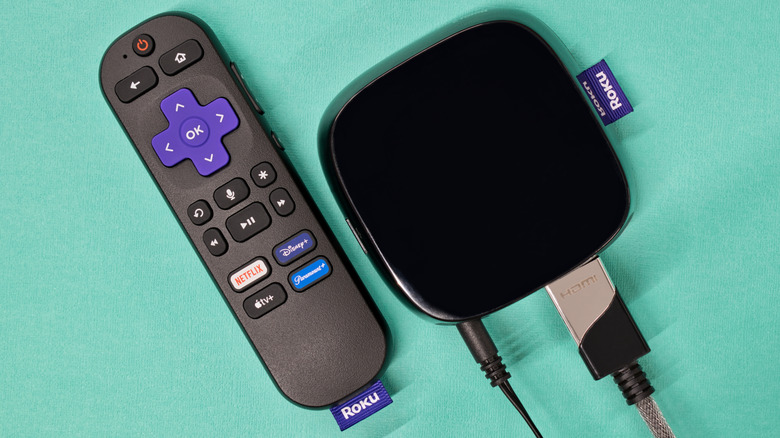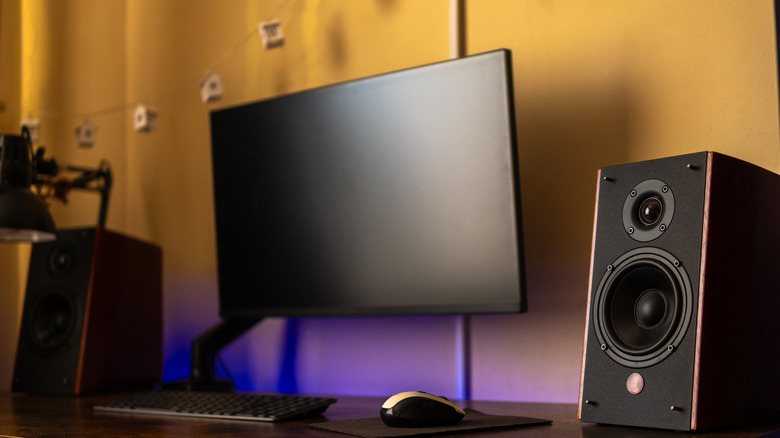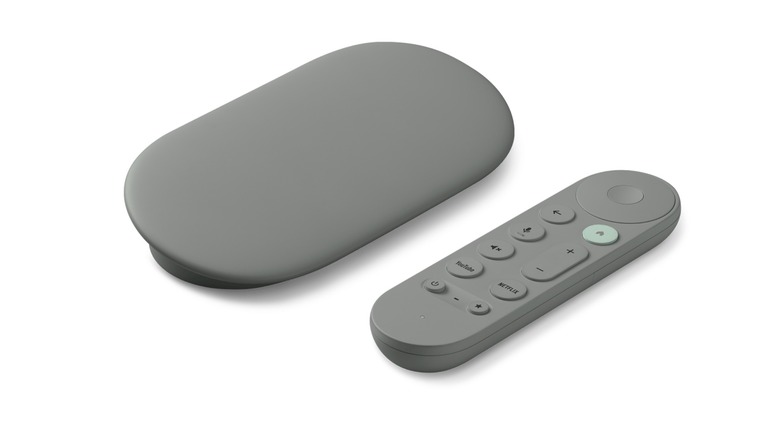How To Use A Computer Monitor As A TV
We may receive a commission on purchases made from links.
As they've proliferated through our lives, the lines between different kinds of displays have blurred. Whether you're looking at a smartphone, computer monitor, or TV, the primary difference is likely to be size. As reporter Delia Cai humorously put it in a viral tweet, "Another day of staring at the big screen while scrolling through my little screen so as to reward myself for staring at the medium screen all week." But what if you want to use the medium screen instead of the big one? If you've been wondering whether your computer monitor could function as a television, the answer is yes, almost definitely. In fact, there are even situations in which a monitor will provide a better viewing experience than most TVs.
If you want to use your monitor as a TV, you can simply connect it to a media source, and you'll be off to the races in no time. However, although the process can be extremely simple in the best-case scenario, there are some tips and tricks that can help you get the best experience, even if your monitor throws you a curveball. Although fundamentally similar, TVs are designed with entertainment in mind, whereas monitors focus on productivity, gaming, or creative work. Features and specs may vary across different monitors depending on what use case they were designed for. We'll cover how to work around some of the most common limitations a monitor may present. For the purposes of this guide, we'll be assuming your monitor has at least one HDMI port, but otherwise, the advice herein should be fairly universal. So, here's how to use a computer monitor as a TV.
Using a monitor as a TV can be incredibly easy
There are many similarities between modern computer monitors and TVs. They're even made with the same manufacturing processes. And as the average TV size continues to expand, monitors remain a fantastic alternative for those who want a smaller display for a bedroom or other small space. The only caveat is that monitors usually do not have coaxial cable connections, meaning you'll have a harder time watching live TV if you subscribe to an old-school cable TV service.
The biggest difference between a monitor and a TV is that most monitors don't include a smart operating system that can support streaming video and other entertainment apps. However, you can fix this by buying a cheap streaming dongle such as an Amazon Fire TV Stick or Google TV Streamer. Simply hook up your smart streaming stick to your monitor's HDMI port, select that one from your monitor's available outputs, and instantly enjoy Netflix, Hulu, and other streaming apps directly on your monitor. In a pinch, you can even connect your smartphone to your monitor with the help of a USB-C to HDMI dongle (or a Lighting to HDMI dongle if you're using an older iPhone).
If you own a gaming console such as an Xbox or PlayStation, you can also connect it to your monitor for gaming and entertainment. In fact, monitors may be the best choice for console gaming since they often include gaming-focused features that TVs lack. If you have one of the best monitors for gaming, your monitor may have features like variable refresh rates and quick response times to make gameplay feel smoother. Many also include features to improve your gameplay, such as on-screen crosshairs that can be enabled.
Monitors usually have low quality speakers, or none at all, so bring your own
Another significant difference between most TVs and most monitors is that monitors tend to have very poor-quality speakers, and many have no speakers at all. Comparatively, TVs tend to have rather robust built-in speakers since they are designed for media consumption. To enjoy audio when using a monitor as a TV, you should connect speakers or headphones. If your monitor has a 3.5mm headphone jack, you can simply connect the audio playback device to it.
Unfortunately, some monitors may not have an audio output connector. In that case, you'll need to find another solution. If you're using a streaming dongle like an Amazon Fire TV Stick, Google Chromecast with Google TV, Google TV Streamer, or certain Roku models, you can use the built-in Bluetooth radio to connect one of the top Bluetooth speakers or pair of Bluetooth headphones to the dongle. If you're using a smartphone or tablet, you can connect a Bluetooth device to it. Alternatively, you can purchase an HDMI audio extractor. These dongles add a 3.5mm headphone jack and/or an optical audio output to your HDMI connection, allowing you to connect your speakers or headphones in line with your HDMI input.
Monitors don't have remote controls
Another difference between a TV and a computer monitor is that since they're designed for up-close viewing, monitors usually do not come with remote controls. If you use a streaming dongle or set-top box, a remote will often be included, which solves the issue. The Amazon Fire TV Stick, Chromecast with Google TV, Google TV Streamer, and Roku set-top boxes all come with remotes.
If you opt to hook up your smartphone or tablet to the monitor, you may be able to remote control it with a bit of creativity. For example, you could purchase a Bluetooth phone remote like Chubby Buttons 2 wearable remote that connects to a smartphone or tablet and provides basic media controls. If you're using a Samsung Galaxy device with a Bluetooth-enabled S Pen, you can use its Air Gestures to a similar effect. However, in either case, you would still need to manually interact with the input device to change what's playing. Another option here would simply be to use a very long HDMI cable, allowing you to keep your input device close at hand.



